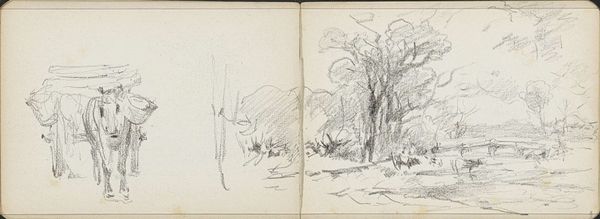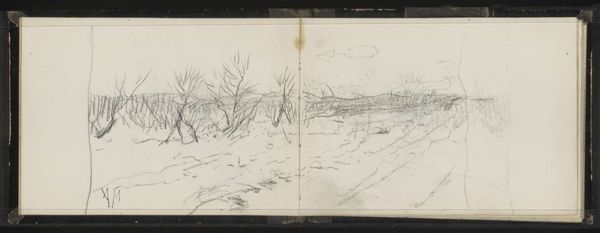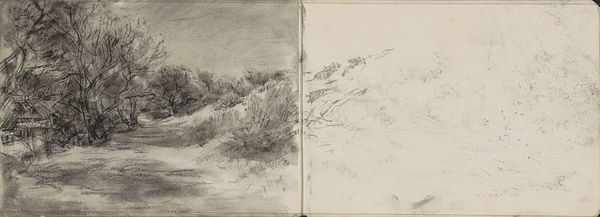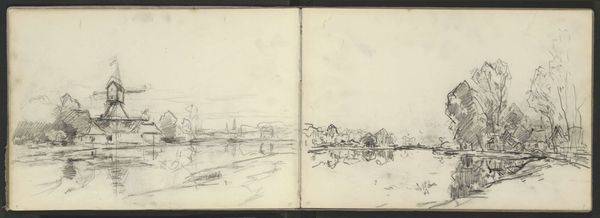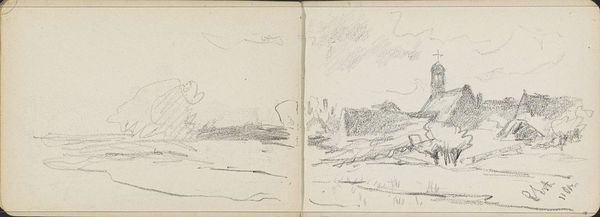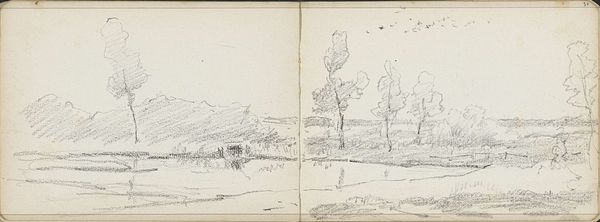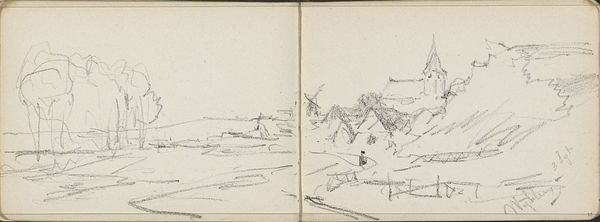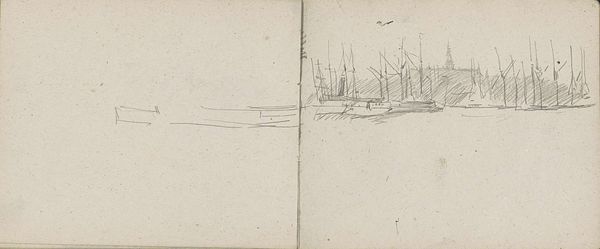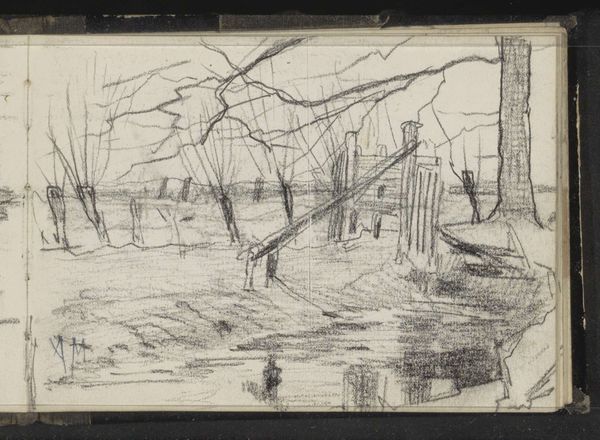
Dimensions: height 116 mm, width 162 mm
Copyright: Rijks Museum: Open Domain
Curator: This is "Landschap bij Ingen," or "Landscape near Ingen," a drawing made between 1905 and 1910 by Willem Cornelis Rip. What are your initial impressions? Editor: Well, looking at the materials and how the artist used them, I'm struck by its simplicity. It appears to be pencil on paper, probably from a sketchbook. It's a quick study, focused more on capturing light and atmosphere than precise detail. There's an immediacy in the marks that speak to the labor involved. Curator: Indeed. And considering Rip’s context, particularly the burgeoning environmental movements of the early 20th century, this seemingly simple sketch could be interpreted as a quietly radical act. It prompts questions of land use, labor, and the individual’s relationship to the environment. It situates Rip within a larger discourse on landscape and identity. Editor: Interesting. The act of sketching in itself reflects a direct engagement with the landscape, doesn't it? Consider the materiality of the paper itself, probably a mass-produced item, allowing for greater access to art making and contributing to the democratization of art at the turn of the century. This simple drawing opens the door to analyzing the impact of industrialization on both the environment and artistic production. Curator: Absolutely. And the way Rip employs Impressionistic techniques to depict this landscape opens another avenue for exploration. The loose, gestural lines, the emphasis on light and shadow, all evoke a specific emotional response, almost a yearning for a simpler, more harmonious relationship with nature. The gaze becomes critical – who is this “nature” for? And how does class impact access to the leisure represented by a scene like this? Editor: It also prompts us to consider the social context of art consumption. The accessibility of drawing materials, facilitated by industrialized production, also democratized leisure time for observing and sketching the landscape, broadening art appreciation among the rising middle class. This sketchbook then isn't just a personal artifact but a small document that tells a larger social story. Curator: Precisely. It's about locating art within the complex network of social, political, and economic forces that shape both its creation and reception. It underscores art's power to act as a mirror, reflecting our evolving relationship with both the environment and with one another. Editor: It all stems from something as simple as pencil on paper. And that grounding in materiality allows us to see these wider connections so much clearer.
Comments
No comments
Be the first to comment and join the conversation on the ultimate creative platform.
